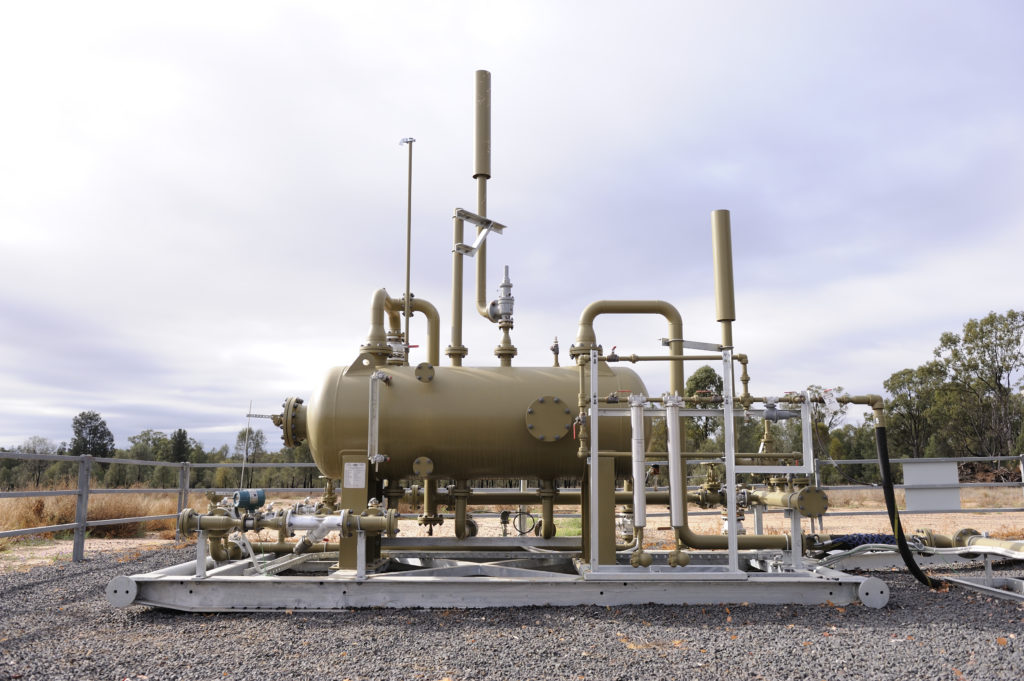Research focus on onshore gas asset decommissioning
The Federal Government’s decision to impose a levy of 48 cents per oil barrel on all Australian offshore oil producers, to fund a clean-up operation in the Timor Sea, has brought asset decommissioning into sharp focus for oil and gas operators.
The clean-up task involves removing the Northern Endeavour, a massive and heavily corroded floating production, storage and offloading vessel, and rehabilitating the Laminaria-Corallina oil fields in the Timor Sea after the fields’ owner, Northern Oil & Gas Australia, went bust in 2019.
The levy ensures Australian taxpayers will not foot the bill for the clean-up, estimated to cost around A$250 million.
There are similar concerns from Australian communities living near onshore gas development regions about the fate of onshore gas wells and other assets at the end of operational life.
CSIRO research
The CSIRO, Australia’s leading science agency, is working with community, government and industry to improve understanding about decommissioning processes for onshore coal seam gas and shale gas wells.
Regional community representatives in Queensland, New South Wales and the Northern Territory have asked the CSIRO to consider a range of issues associated with decommissioning gas wells.
Chief among their concerns was the potential for decommissioned wells to leak methane or to provide unintended connection between aquifers. There was also interest in long-term management and monitoring options.

A marker for an abandonded gas well in the Pilliga Forest, NSW.
A marker for an abandoned gas well in the Pilliga Forest, NSW.
CSIRO scientists have completed three research projects exploring various aspects of decommissioned onshore gas wells, including long-term monitoring, materials and techniques for improving structural integrity, and community perspectives on decommissioning processes for CSG wells in Queensland and News South Wales.
Conducted through the CSIRO’s Gas Industry Social and Environmental Research Alliance (GISERA), the research shows that the best outcomes for decommissioned wells occur when planning for decommissioning is part of up-front design and ongoing operations.
Community views
The final report, Decommissioning Gas Wells, describes how CSIRO researchers held a series of focus groups with representatives from industry, government and local communities in Chinchilla, Narrabri and Camden.
A key finding was that across all of the workshops, industry and government regulators expressed strong confidence in the code of practice for each state and felt that each code was clearly articulated and consistent with international best practices.
However local community members tended not to share this view and generally found the codes of practices inaccessible, difficult to understand or open to interpretation.
For community members to have confidence in decommissioning processes, researchers concluded, information about decommissioning needs to be readily available in everyday language.
Long-term monitoring
The research project Improved approaches to long-term monitoring of decommissioned wells investigated options for long-term monitoring of well integrity in decommissioned onshore gas wells in the Northern Territory.
Research results identified direct monitoring at the surface (immediately above a well that has been fully decommissioned) through methane gas detection, along with indirect monitoring for methane at the well pad scale, as the most effective monitoring approach for fully decommissioned wells.
If well barrier integrity issues were to occur, the buoyancy and mobility of methane means this is the most likely hydrocarbon to move first to the surface. The availability of reliable, robust and sensitive methane detectors that can be used in the field should allow leaks that reach the surface to be detected.
Researchers also found that confirming the integrity of wells at the time of decommissioning is the best means of reducing long-term post-decommissioning risk to a level as low as reasonably practical.

A coal seam gas well head and separator.
A coal seam gas well head and separator. CSIRO research shows that the best outcomes for decommissioned wells occur when planning for decommissioning is part of up-front design and ongoing operations.
New materials
The Mitigating fugitive emissions from well casings study assessed new materials designed to minimise fugitive methane emissions leaking from microfractures and gaps in gas well cement casing.
This research evaluated the performance of five potential fracture sealing materials, including two geopolymers and three thermal-activated polymer resins. They were evaluated for their ability to be injected into sand packs, which replicate material featuring tiny gaps, and then for their performance in sealing fractures.
The study demonstrated that thermal-activated polymer resins may be most effective in sealing small fractures in situations where conventional well cement would likely fail to seal.
CSIRO is conducting further laboratory experimental studies to evaluate the performance of thermal-activated polymer resins. This additional work will be conducted outside of GISERA as it is of an engineering research and design nature rather than directly of interest to the community.
Further research
The CSIRO has approved further research into decommissioning in the Northern Territory. The Beetaloo basin shale long-term competency after decommissioning research project will investigate the ability of shale formations in the Beetaloo Basin in the Northern Territory to “self seal” and create a natural barrier to block movement of hydrocarbons.
